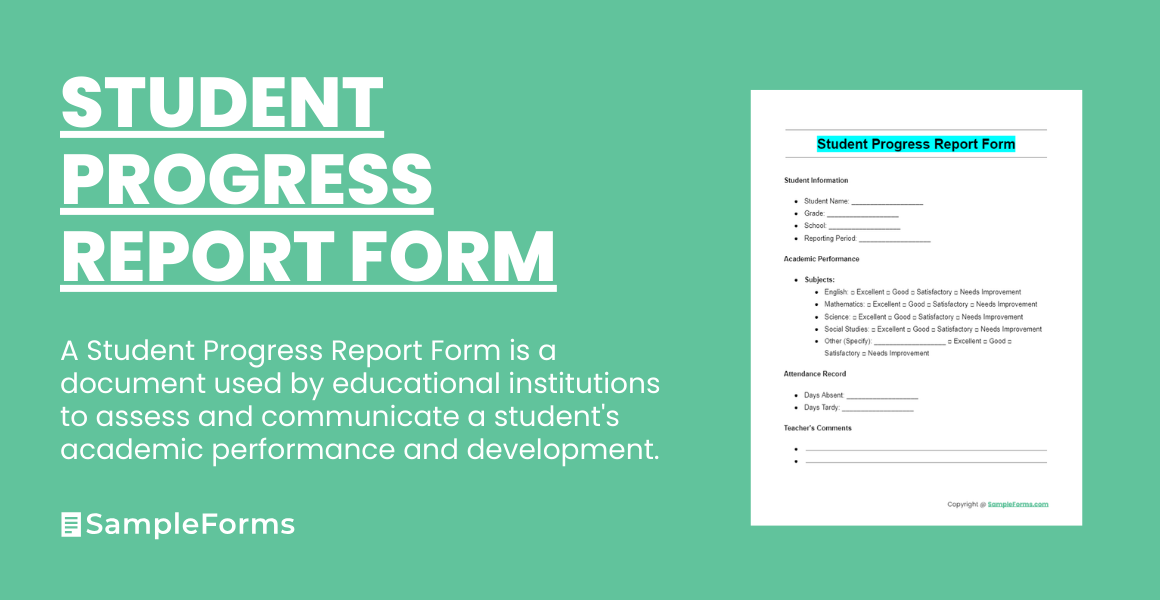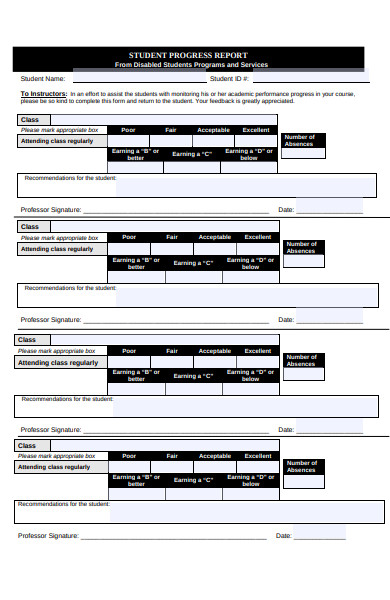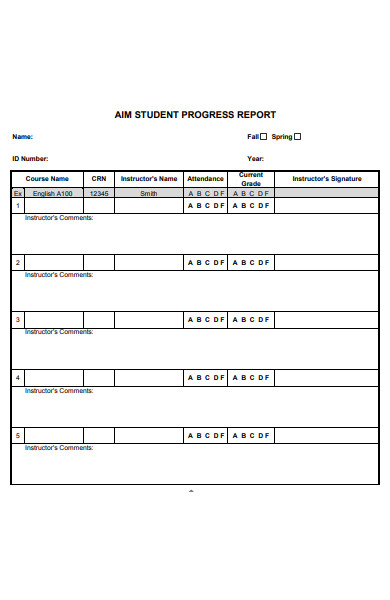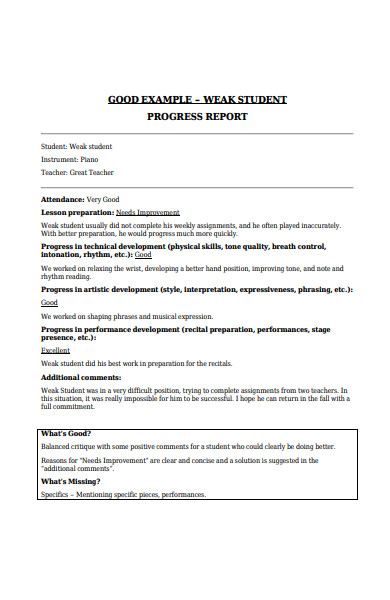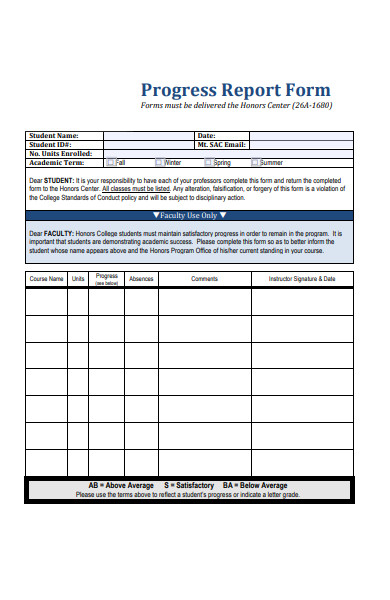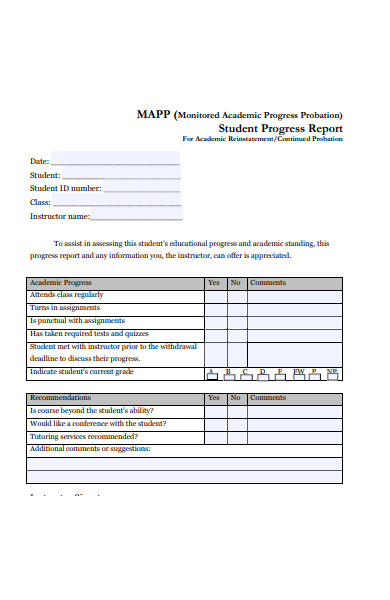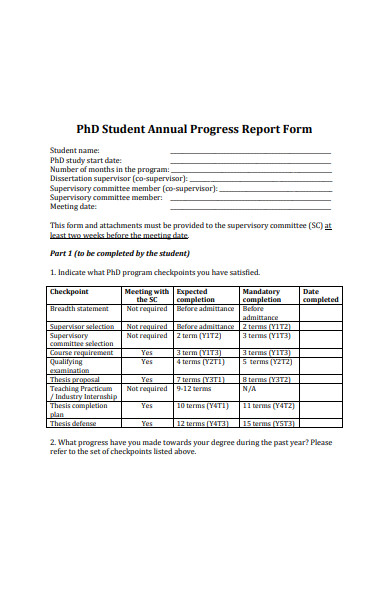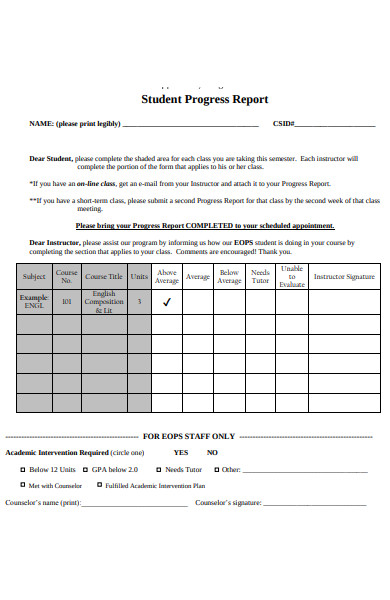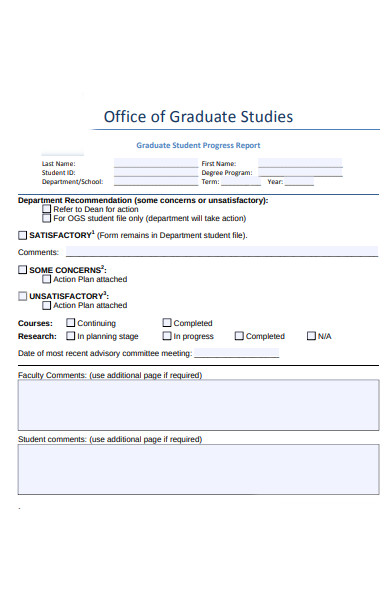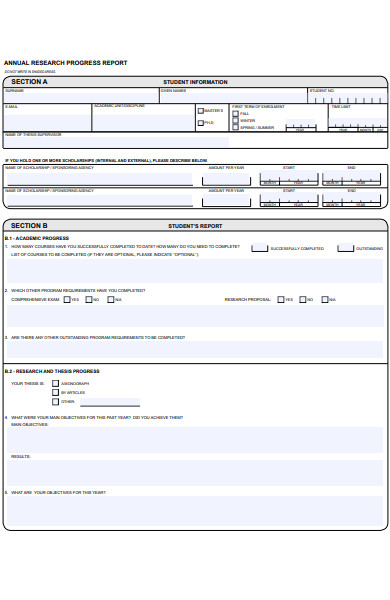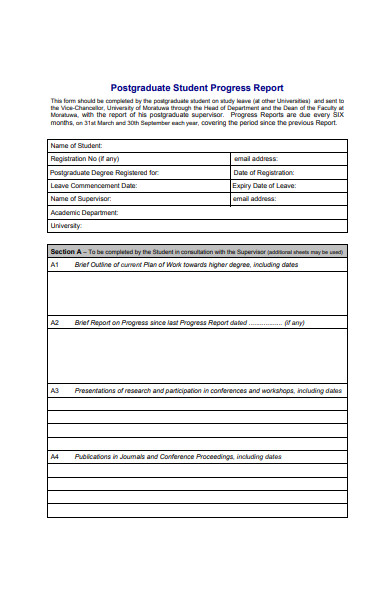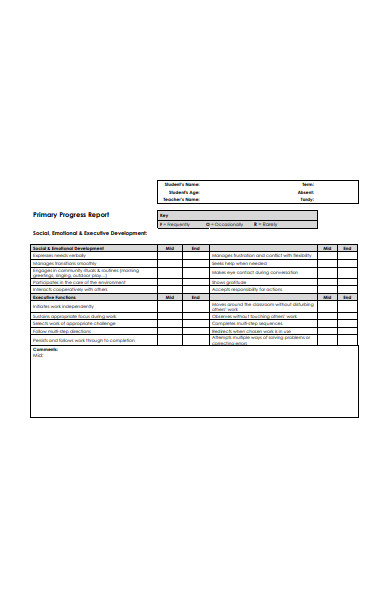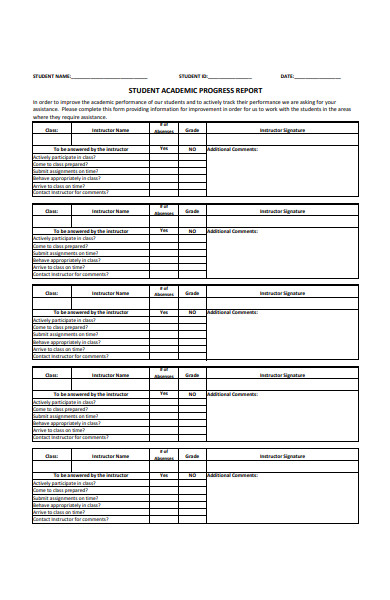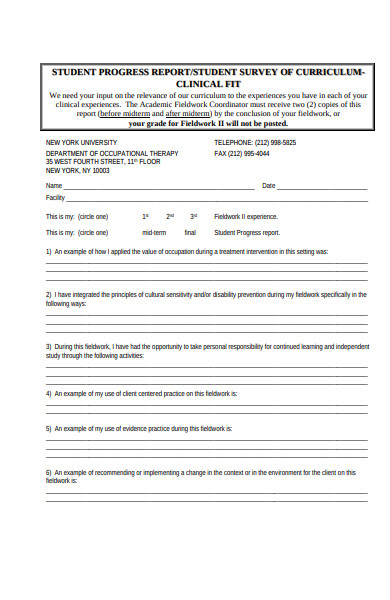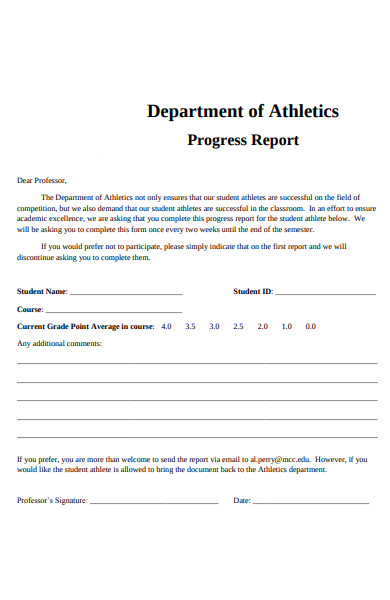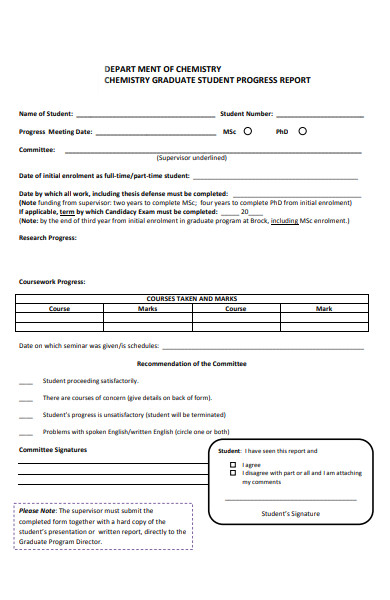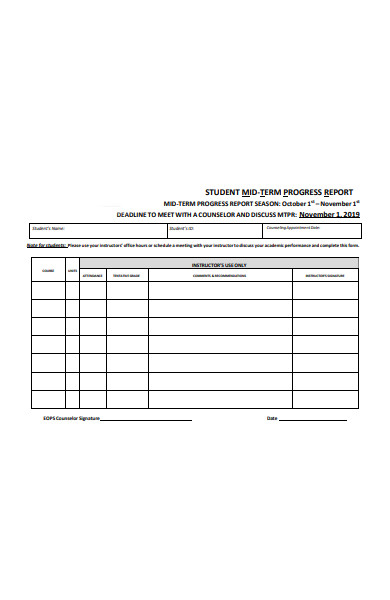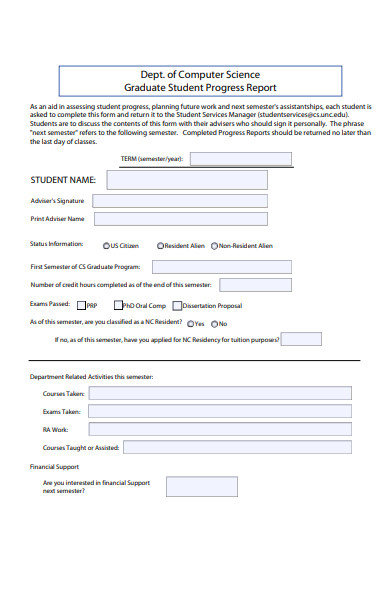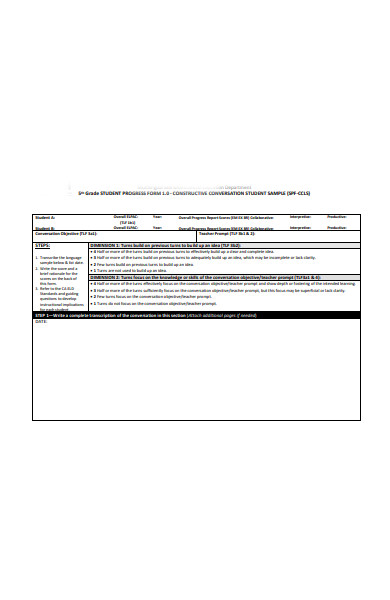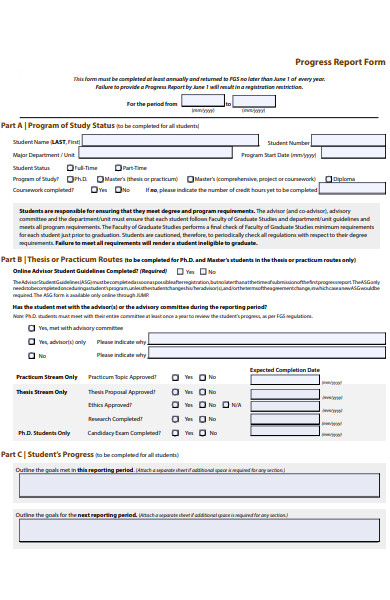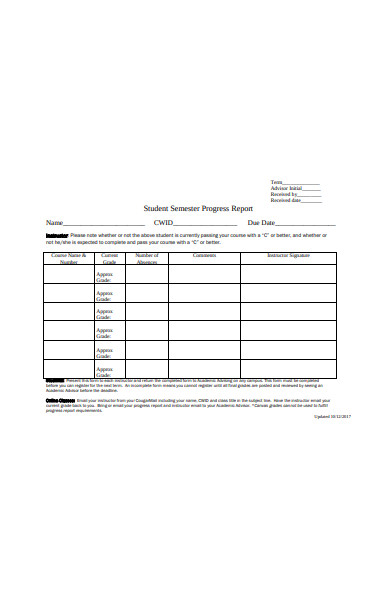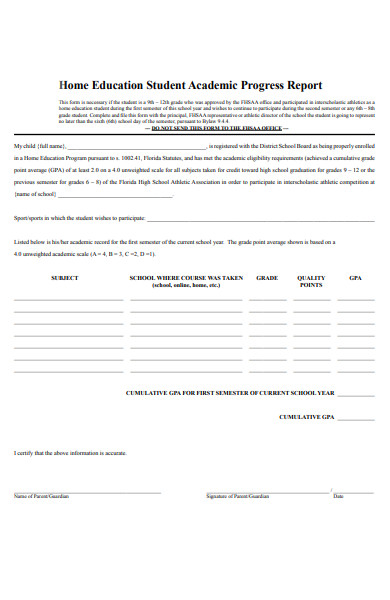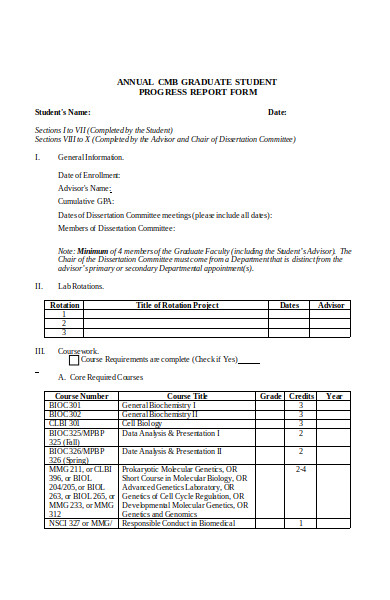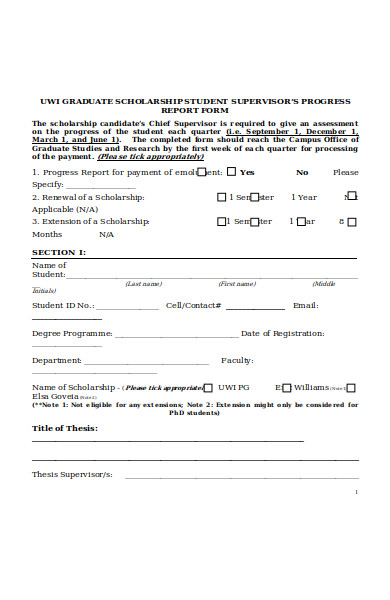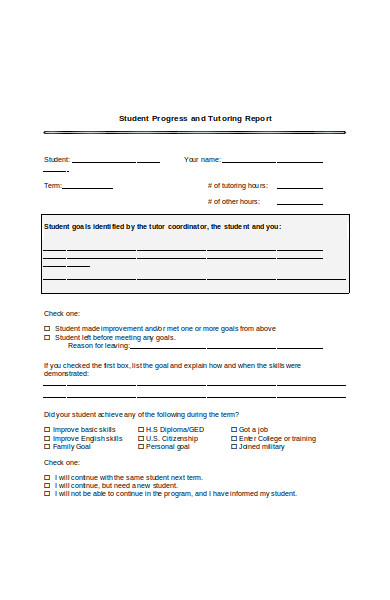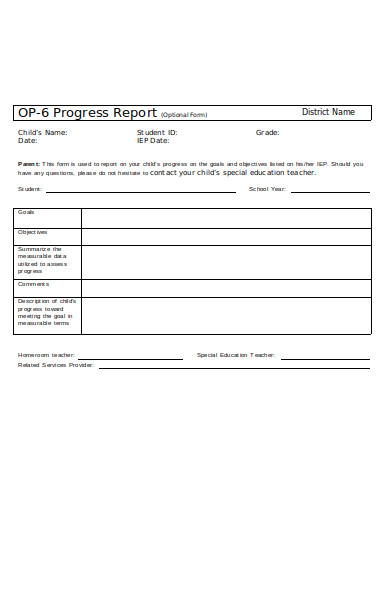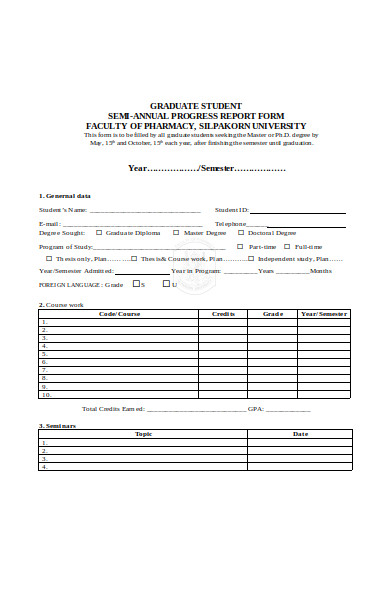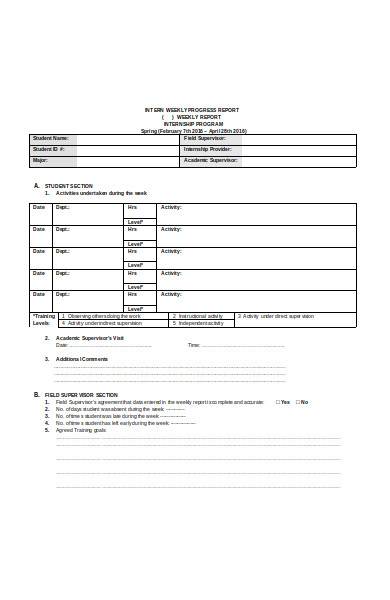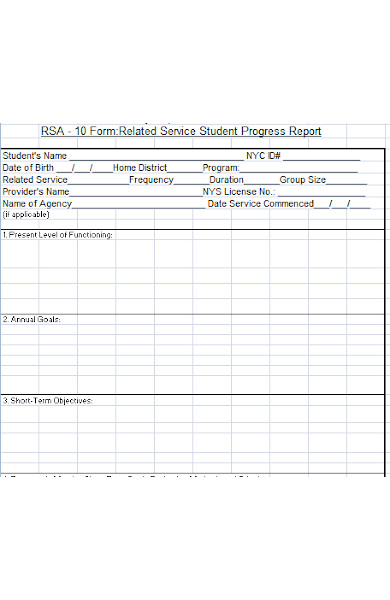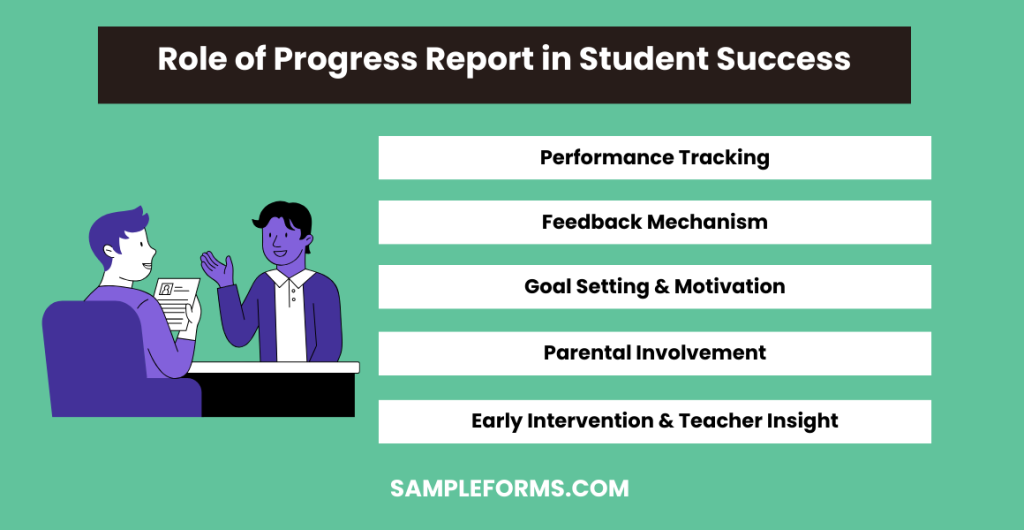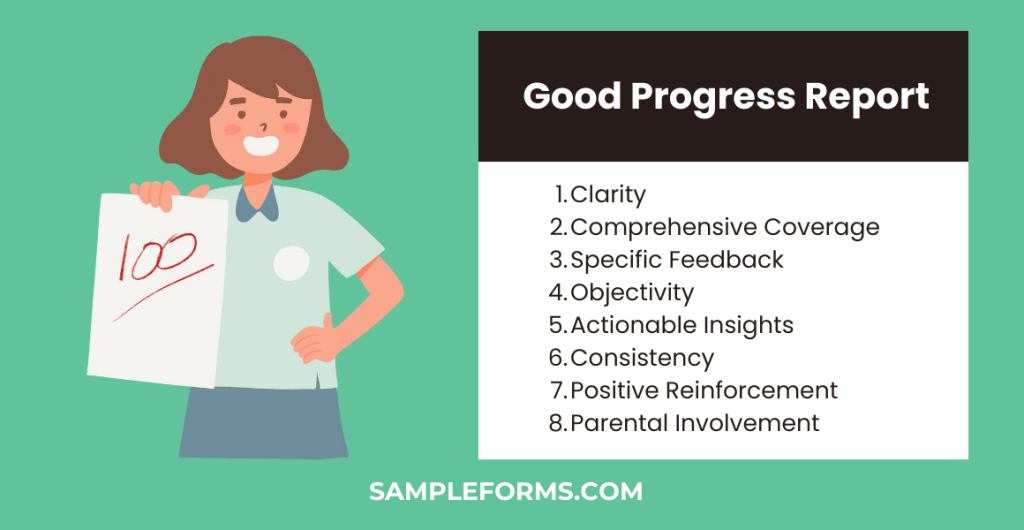Embark on a journey to enhance educational outcomes with our detailed guide on Student Progress Report Forms. This essential tool, designed to bridge communication between educators and stakeholders, offers a structured approach to documenting and evaluating student progress. With a focus on both Report Form and Student Report Form, we provide rich, actionable insights and examples that empower educators to craft reports that are both informative and transformative. Dive into the world of effective student assessment and discover strategies to promote academic excellence.
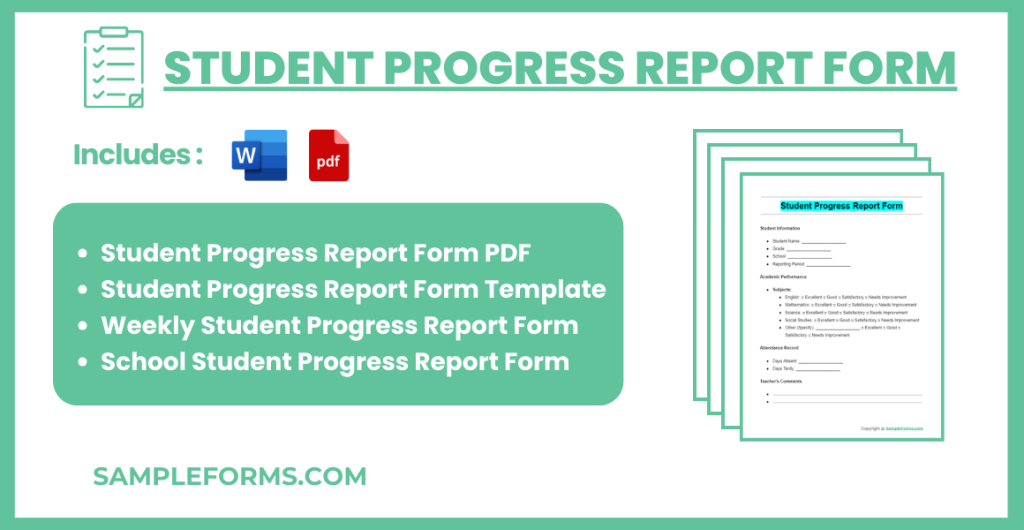
Download Student Progress Report Form Bundle
What is Student Progress Report Form?
A Student Progress Report Form is a vital educational tool used by teachers to periodically assess and communicate the academic performance and progress of their students. It serves as a detailed record of a student’s achievements, areas of improvement, and overall engagement in their learning journey. These forms not only facilitate targeted feedback but also play a crucial role in fostering a collaborative educational environment, encouraging student growth, and informing future teaching strategies.
What is the Best Sample Student Progress Report Form?
This sample Student Progress Report Form is designed to provide a comprehensive overview of a student’s academic performance and behavior in a specific period.
School Name: ___________________________
Student Information
- Name: ___________________________
- Grade: _________________________
- Teacher: _______________________
- Reporting Period: _______________
Academic Performance
- Subjects:
- Math: Grade: ____, Comments: ____________
- Science: Grade: ____, Comments: __________
- English: Grade: ____, Comments: __________
- History: Grade: ____, Comments: __________
- [Other Subjects]
Behavior and Participation
- Classroom Behavior: _______________
- Participation: ____________________
- Attendance: ______________________
- Additional Comments: ______________
Skills Development
- Reading Level: ___________________
- Writing Skills: __________________
- Math Skills: _____________________
- Critical Thinking: ________________
- Social Skills: ____________________
Teacher’s Overall Comments:
Parent/Guardian Acknowledgment:
- Signature: ______________________
Date: _______________
Instructions for Use:
- Fill in all relevant sections with accurate information.
- Use the comments section to provide specific feedback.
- Review and sign the form to acknowledge receipt and understanding.
Note: This form is a template and can be customized to fit the specific needs and assessment criteria of the school or educational program.
Student Progress Report Form Format
Student Progress Report Form Format
Student Identification
- Student Name
- Class/Grade
- School Year
Academic Progress
- Subjects and Performance:
- English
- Math
- Science
- Social Studies
- Additional Subjects
- Overall Academic Standing
Behavioral Evaluation
- Classroom Participation
- Respectfulness
- Homework and Assignment Completion
- Cooperation with Peers and Teachers
Attendance Overview
- Days Attended
- Days Absent
- Punctuality
Teacher’s Observations and Recommendations
- Observations
- Recommendations for Improvement
Parent/Guardian Acknowledgement
- I have reviewed this progress report and discussed it with my child.
- Parent/Guardian Signature: _______________________________________ Date: _________________
Student Progress Report Form PDF
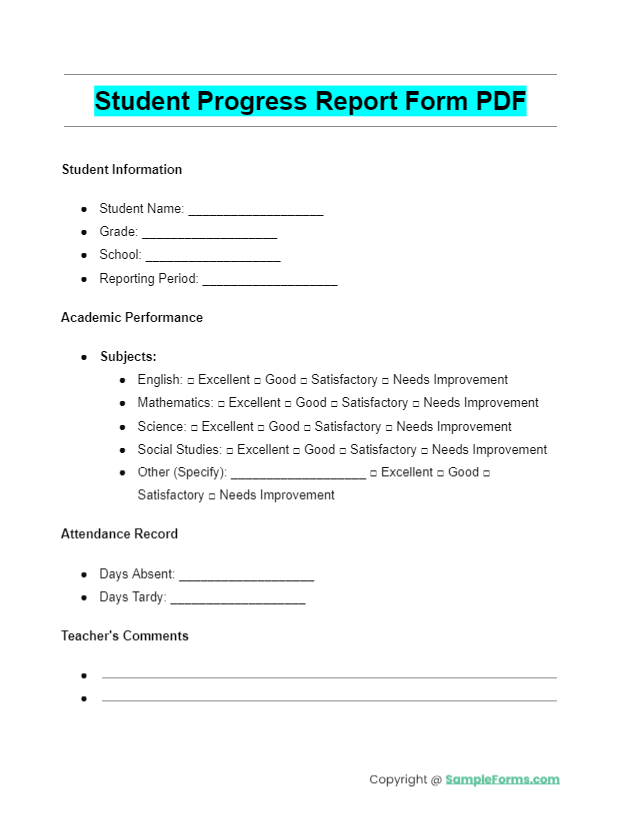
A Student Progress Report Form PDF is a downloadable tool designed for educators to easily assess and document student performance, incorporating elements like Student Registration Form details for comprehensive tracking and reporting. You may also see Student Feedback Form.
Student Progress Report Form Template
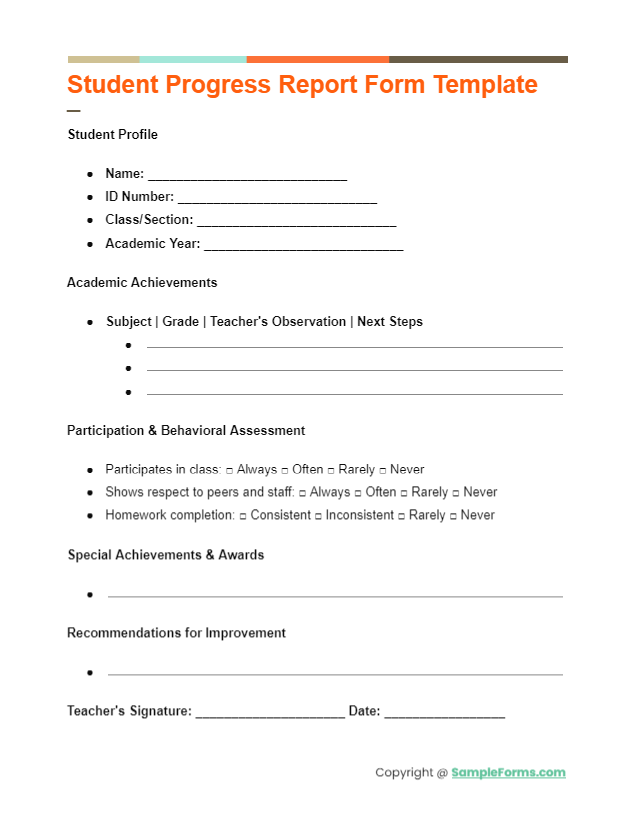
This template serves as a customizable foundation for educators to create detailed reports, integrating Student Clearance Form insights, ensuring a holistic view of academic and extracurricular progress. You may also see Student Observation Form.
Weekly Student Progress Report Form
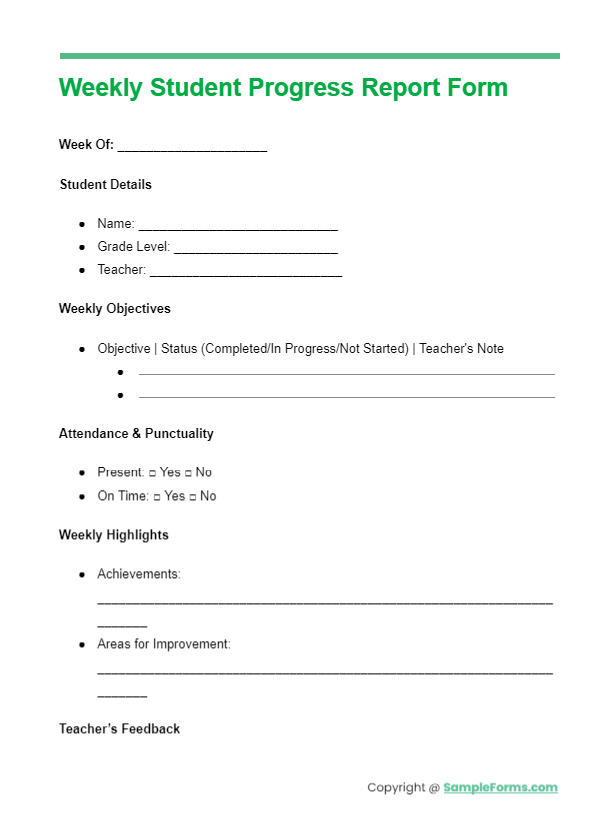
Ideal for continuous monitoring, the Weekly Student Progress Report Form allows teachers to provide timely feedback, incorporating Student Affidavit Form data for adherence to academic integrity policies. You may also see Student Transfer Form.
School Student Progress Report Form
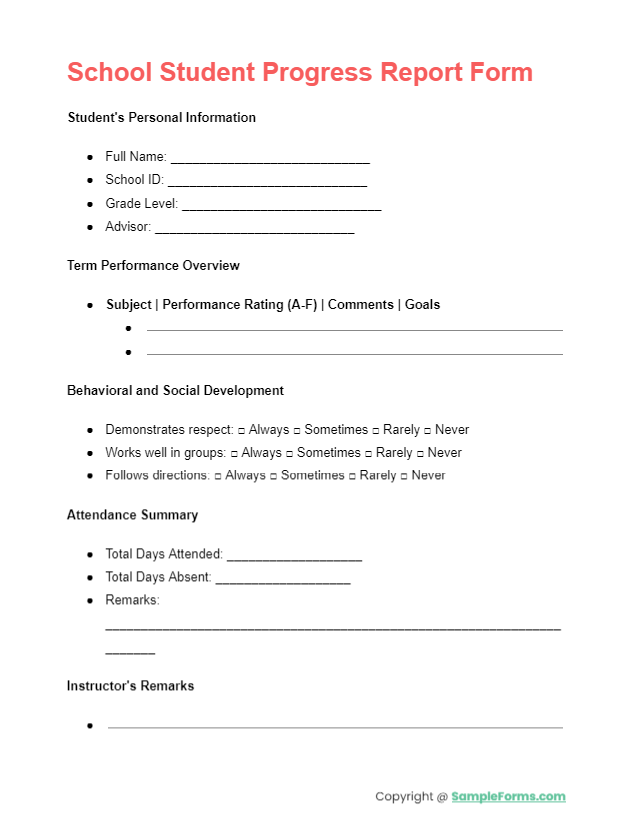
More Student Progress Report Form Samples
Student Performance Progress Report Form
Aim Student Progress Report Form
Weak Student Progress Report Form
Student Progress Report Form Sample
Graduate Student Progress Report Form
Student Annual Progress Report Form
General Student Progress Report Form
Simple Student Progress Report Form
Basic Student Progress Report Form
Student Research Progress Report Form
Post Graduate Student Progress Report Form
Primary Student Progress Report Form
Student Academic Progress Report Form
Student Survey Progress Report Form
Student Athletic Progress Report Form
Chemistry Graduate Student Progress Report Form
Student Mid Term Progress Report Form
Compute Science Student Progress Report Form
Grade Student Progress Report Form in PDF
Student Interactive Progress Report Form
Student Semester Progress Report Form
Home Education Student Progress Report Form
Student Progress Tracking Report Form
Student Monthly Progress Report Form in Word
Supervisor Student Progress Report Form
Student Progress Tutoring Report Form
Special Education Student Progress Report Form
Doctoral Student Progress Report Form
Student Semi Annual Progress Report Form
Student Weekly Progress Report Form
Research Student Progress Report Form
Student Annual Progress Report Form
How to Write a Student Progress Report Template
Writing a Student Progress Report Template involves a structured approach to accurately and effectively communicate a student’s achievements and areas needing improvement. Here’s how to craft an impactful template:
- Begin with Basic Information: Start by including basic details such as the student’s name, grade, and reporting period. This can be part of the Student Contact Form section of your report.
- Integrate Assessment Scores: Incorporate results from the Student Assessment Form to provide a quantitative measure of the student’s academic performance.
- Detail Academic Progress: Highlight key achievements and areas for improvement. Use specific examples to provide a clear picture of the student’s progress.
- Incorporate Additional Forms: Depending on the purpose of the report, include other relevant forms such as the Student Loan Agreement Form or Student Budget Form for a comprehensive overview.
- Conclude with Actionable Steps: End the report with recommendations for future improvement, possibly derived from a Student Action Form, to guide both students and parents.
What are the Four Steps to Write a Progress Report?
- Gather Information: Start by collecting all necessary information about the student’s performance, using tools like the Student Self-Assessment Form and Student Survey Form to gather varied perspectives.
- Analyze Progress: Evaluate the data collected, focusing on both strengths and weaknesses. This analysis should be grounded in specific examples and assessments.
- Draft the Report: Begin drafting the report, structuring it to include an introduction, detailed progress evaluation, and a conclusion with recommendations. Here, the Student Statement Form can provide personal insights from the student.
- Review and Finalize: Review the draft for accuracy, ensuring that all information is correctly represented and that it includes all necessary components such as the Student Complaint Form, if applicable, to address any concerns raised during the period. You should also take a look at our Project Report Form.
What is Included in a Student Progress Report?
A Student Progress Report should encompass a comprehensive overview of a student’s academic journey, highlighting both achievements and areas needing attention. Key components include:
- Personal Information: Basic details about the student, typically gathered from the Student Contact Form.
- Academic Performance: Insights detailing grades, strengths, and areas for improvement.
- Behavioral and Social Development: Observations on the student’s social interactions and behavior, possibly informed by the Student Action Form.
- Student’s Perspective: Incorporate self-reflections captured in the Student Self-Assessment Form to add depth to the report.
- Feedback and Recommendations: Suggestions for future improvement, which could tie back to specific actions or goals outlined in the Student Action Form.
- Additional Information: Depending on the context, other forms such as the Student Loan Agreement Form, Student Survey Form, Student Statement Form, Student Complaint Form, and Student Budget Form might be referenced to provide a fuller picture of the student’s situation and needs. You should also take a look at our Activity Report Form.
Student Reports: Why are They Necessary?
The digital era made report cards accessible to parents, as long as they remember the log-in credentials. Although some parents disliked this idea, institutions used this method to reduce the carbon footprint of sending out papers to every household. Despite the debate, it does not diminish the usefulness of a student progress report in assessing the learning milestones. Here are four key reasons why tracking the progress of a student helps them achieve their goals:
-
Track Efforts that Count
If you become overwhelmed with the goals that sometimes, you become unaware of your destination point. Having a track record can point out efforts that count. It will determine whether those late nights studying at the cafe shop help in acing the upcoming exam. It is essential to track efforts that count because the feeling of wasted time and effort can make you lose determination.
-
Understand the Source of a Problem
Every journey holds a lesson. Along with that lesson, you might encounter a problem that would discourage you from your dream path. Aside from that, setting up a goal involves different strategies. You would want to figure out which approach works best for you. If you try to look up into Google’s search bar, there are a lot of ways people deal with this kind of addiction, but not every recommended strategy works for everyone. A progress report is your tool to identify the sources of problems or distractions that hinder you from achieving your dream goals.
-
Keep Close to Your Dream Career Path
Having a reference on the progress you make keeps you close to your chosen career path. Just like climbing a mountain, the trail may not be visible all the time. Chances of getting lost while traversing the trail is not an impossibility. Even if you have the guidance of your parents and mentors, life can still cloud your decisions. You need to have a constant reminder on your career path, and having a progress report helps you do so.
-
Know Yourself Better
In achieving your goals, you learn something new about yourself. Challenges can test our personalities and hidden abilities. Keeping a track record of every milestone while working on those goals gives you a better understanding of yourself. It is essential to evaluate yourself because you would be able to point out your strengths and weaknesses. If you work on it, you can even create your weaknesses as your strength. You should also take a look at our Financial Report Form
How to Make a Student Progress Report
Creating a report is a fantastic way to illustrate numbers attractively. Such documents make understanding the significance of the numbers easily readable. If you do not have background knowledge of data analysis, looking at a series of numbers in a plain sheet of paper can cause headaches.
Similarly, teachers do not attach the student’s list of scores for the given tasks in the report sheet. Instead, the instructor may use letters and symbols to denote the overall average of the student’s scores. In this way, there would be lesser confusion in what the numbers mean. Making a student progress report can take time because you have to analyze data to be able to interpret it in a more straightforward language. Worry not, these steps can help you make that report as easy as eating a slice of cake.
Step 1: Identify the Criteria, Goals and Other Forms of Reference for the Progress Report
One important aspect that an instructor must focus on in a progress report is the basis for the ratings. Some schools use the 5.0 rating while others use the 4.0 rating scale. Also, some institutions use letters from A to F to signify the range of a student’s performance rating. Before getting to the dirty work on creating the template of a progress report, make sure to understand the references used to specify the ratings.
Also, it would be a good help if you understand the criteria and the goals set by the curriculum so that you can entertain parents’ questions easily. It is undeniable that some parents would question the ratings written on the report sheet. As an instructor, prepare yourself with the standard criteria and, if not applicable, ready the basis of reference in case the usual rules are not convincing enough. For example, students studying a technical course might not have tons of homework and tests. But, they undergo a practical examination justified by pictures of their outputs in a portfolio. The portfolio itself is a basis of reference that an instructor can use to justify the rating given.
Step 2: Use Sections to Sort Out One Type of Data from Another
A student progress report should indicate the name of the student, the address, contact information of parents, and the list goes on. These crucial details look better if they have a category that separates them from the rest of the details. If you want to have a professional outlook of a student progress report, use sections for the information stated on the form.
For example, you can have section one as a student’s information, section two as parent’s contact information, section three as the rating report, and the last section as feedback and suggestion. Dividing the information category into parts helps not only the parents but also the record keeper of such forms because it would be easier to alphabetize. Aside from that, the document would look neat with a section-based template.
Step 3: Create a Commentary Section for Suggestions and Feedbacks
Similar to selling a new product in a local marketplace, the room for suggestions and feedbacks should be open to student progress reports, too. The numbers on the progress report are not enough to justify his or her ability to learn without any written feedback. Because number ratings cannot provide the weak and strong aspects that a student possesses, comments would fill the missing. Aside from that, parents would have a broader understanding of the rating given by the instructors.
Step 4: Do Not Forget to Include a Description of Symbols Used
Symbols include letters as rating marks of the general weighted average for one grading period in a particular subject. It is crucial to allocate a small space that explains the symbols used in the progress report. Labels are essential so that a reader or viewer would not have any difficulty in understanding them. Our Audit Report Form is also worth a look at.
Step 5: Include Contact Information of the School or the Section Adviser
As emphasized, some parents may question the ratings on the progress report. Although it is not a guarantee that every parent does this, it is essential to include the contact information of the school or perhaps, the section adviser to answer questions regarding the report form. Also, there might be busy parents who barely have the time to go to school during office hours. Because technology made us closer to people miles away, better utilize electronic mail platforms such as Gmail and Yahoo to receive parent’s concerns.
Step 6: Proofread the Contents and Use a Simple Design
The progress report is not an all numbers document. It is crucial to proofread the paper before heading out to rearrange it by designing the form. It is essential to have a professional appeal so that students and parents would not become hesitant with the report form. Also, report forms look better when they are simple. No need for too much color combination. Proper alignment and readable fonts are two critical aspects to look out in the student progress report. If the design and content satisfy the standards, then it is suitable for printing and distribution.
No matter how slow you are doing in achieving your goals, the vital thing to keep in mind is the progress you make daily. Being a student does not stop within the classroom walls. Even if you are a professional, you are still a student, but the classroom becomes the real world. The student progress report helps you unlock the best abilities you have. It is important to acknowledge every downfall and victory. Reaching the mountain top is only a reflection of the sacrifices, the struggles, and the happiness of working hard through little but continual progress. You may also see School Report Form
What is the Role of Progress Report in Student Success?
Related Posts
-
FREE 15+ Case Report Forms in PDF | MS Word
-
FREE 4+ Campaign Finance Forms in PDF
-
Internal Audit Form
-
Referee Report Form
-
Joining Report Form
-
Laboratory Report Form
-
FREE 5+ Sponsorship Report Forms in PDF | MS Word
-
FREE 9+ Final Report Forms in PDF | MS Word | Excel
-
11+ Confidential Report Form
-
FREE 6+ Rent Report Forms in PDF
-
FREE 5+ Mileage Report Forms in MS Word | PDF | Excel
-
FREE 4+ Management Report Forms in PDF | MS Word
-
FREE 17 + Disciplinary Report Forms in MS Word | PDF | Google Docs | Apple Pages
-
Petty Cash Log
-
Damage Report Form
